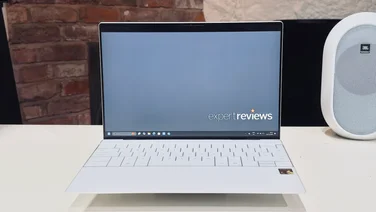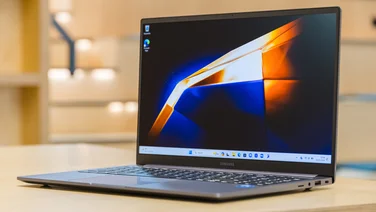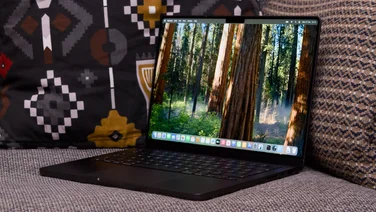To help us provide you with free impartial advice, we may earn a commission if you buy through links on our site. Learn more







We’ve always had a lot of time for Asus’ Transformer Pad range, with both the original Transformer and the more recent Asus Transformer Prime getting a positive reception. We first saw the new Transformer Pad Infinity at MWC in March and marvelled at its then incredible 1,920×1,200 resolution display. That, though, was two weeks before Apple launched its new 2,048×1,536 iPad and redefined the kind of resolution we expect from a tablet.
Since then, and just pipping Asus to the punch, we’ve also seen the Acer Iconia Tab A700, which has the same display resolution.

Its screen resolution may no longer be ground-breaking then, but the Transformer Pad Infinity 700 is rather different from those two devices. This is because of its keyboard dock, which turns the tablet into a small laptop. We bemoaned the lack of a tablet-only option with recent Transformer devices, but we have been able to find this one dock-free online. Because of this we’ll be reviewing the 32GB tablet standalone at £450, before adding our thoughts on the dock at the end.
TO INFINITY AND BEYOND!
When powered down the new Transformer Pad Infinity TF700T looks identical to previous flagship device – the Transformer Prime. The metal body comes in a dark, purplish grey with Asus’ usual circular pattern on the rear. At only 8.5mm thick and feeling incredibly sturdy, it’s an impressive device. The only niggle is a metallic-finish plastic panel across the upper back, which includes the power and volume buttons plus the camera and its flash.
The camera has been upgraded since the Prime, with a faster F2.2 lens. It takes some pretty good-looking shots, they lack some of the fine detail of the best camera phones, but the focus and colour balances are both decent and when resized for posting to the web or Facebook they look fine.

Once resized for use on the internet, images from the camera look pretty good – click to enlarge

But this pixel-to-pixel crop of the original shows the lack of detail – click to enlarge
A headphone socket and micro-HDMI output are cut into the metal chassis on the lower left-hand side. Just above this is a microSD card slot supporting up to 32GB cards (which only costs around £15 at present). This is a very cheap way to expand the 32GB of onboard memory, rather than splashing out an extra £50 for the 64GB version of the tablet.
The hardware may be familiar – impressive but not outstanding – but turn it on and it immediately leaps to the head of the Android pack. The IPS screen is brilliantly bright, so much so that under normal use there’s little reason to turn it up all the way. Asus has added what it calls a Super IPS+ mode for outdoor use, which pushes the brightness up to maximum for use on sunny days.
The quality of the screen as a whole is excellent, with vibrant colours and plenty of contrast in darker scenes, this is a top quality panel. The high resolution means you can enjoy Full HD content in pixel-to-pixel clarity, though you won’t actually see all those pixels thanks to a superfine 224 pixels-per-inch. It’s equally useful when browsing websites, with crisp text and no need to zoom in and out. Our only complaint is with the gloss finish on the display, which means there’s lots of annoying reflections when using it out of the home.
The widescreen aspect ratio makes it a better choice than an iPad when it comes to watching movies. Plus, with Android you get some fantastic media players, which can play pretty much any file you come across, in addition you get simple drag-and-drop file transfers from a PC.
Speaking of Android, the Transformer Infinity comes with version 4.0.3. We all thought this was pretty impressive until we saw Android 4.1 running on Google’s own Nexus 7 – actually manufactured by Asus as well. The newer version of the operating system has a number of small improvements, but it’s the silky-smooth interface that really makes it. Thankfully Asus has an excellent record of providing quick updates for its devices, so you shouldn’t have to wait long.

‘APPY TO BE HERE
One downside of Android for tablet users is a lack of tablet-specific apps designed to make full use of larger and higher resolution display. This problem is only compounded by the new generation of Full HD tablets, as they are even further from the budget smartphones that most apps aim at as the lowest common denominator. Things could improve for Android tablet users thanks to the popularity of the cut-price Nexus 7, but even that is a half-way house in terms of screen size and resolution, and so it remains to be seen whether developers see fit to make the most of high-end devices like this one.
HARD WEARING
On this Wi-Fi only version of the tablet you get the now-familiar Nvidia Tegra 3 chipset, or so we thought. Looking a little more carefully reveals that this version of the quad-core chip runs at 1.6GHz rather than the more typical 1.3GHz.
It felt fast in use, launching applications quickly, but in our SunSpider JavaScipt benchmark it didn’t pick up any extra marks, with a score of 1,856ms. We’re not entirely convinced that you’ll appreciate the extra speed in any practical way, though it’s nice to know it’s there. The 3G version of the Transformer Infinity uses a totally different Qualcomm chipset, and so we can’t comment on that based on this review sample.
The Nvidia chipset’s additional low-power processing core helps with low-intensity tasks, such as our continuous playback video test. Here the Transformer Infinity lasted for just shy of ten hours on its 6,757mAh battery. That’s pretty typical for a tablet these days, but it can be boosted massively by adding the keyboard dock.
DOCK LEAVES
We’ve covered Transformer keyboard docks numerous times before and this one is no different. The tablet clips into place on the back of the keyboard, and the pairing looks like a netbook. The keyboard itself is still pretty spongy-feeling, though they’ve ironed out all the software quirks now and it’s far better than jabbing at the onscreen keyboard. Speaking of jabbing, the hybrid device is rather unstable. A harsh prod at the screen will cause the whole thing to tip backwards or at least rock back and forth.

The Transformer is a pretty clever idea, but if you’re looking for a hybrid device then it may be worth waiting till later in the year, when the launch of Windows 8 will bring with it plenty of new contenders
The built-in 5,270mAh battery in the keyboard dock provided an additional six hours and 48 minutes of battery life. This is routed into the tablet’s battery when that is low, so that the tablet should always have the maximum possible charge for standalone use. The dock also provides a full-sized SD card slot (great for photographers) and a USB port for connecting other storage devices.

Asus informed us that the dock and 64GB version of the tablet will be sold as a bundle for £600 from later this month. This is pretty steep for an Android tablet, even when it can also masquerade as a laptop with an incredible combined battery life.
CONCLUSION
If you’re looking for a posh Android tablet then the Asus Transformer Pad Infinity TF700T is our new top pick. At £450 it’s £70 more than its immediate competition from Acer, but that device has some niggles, while this tablet comes with a brighter screen, a metal body and a faster processor, plus we’re almost certain it will receive an Android 4.1 update first.
If you’re more agnostic about your choice between Apple and Android, however, then the iPad is still a better bet. Any hardware differences aside, the Apple device has a far larger selection of apps designed not only for tablets, but also to make full use of its high-resolution display.






